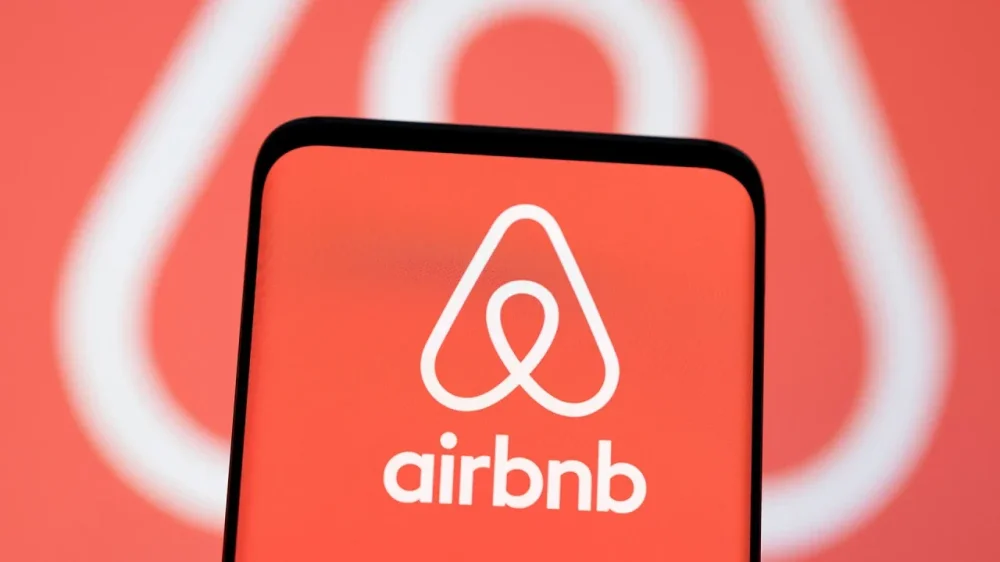All Activity
- Past hour
-
Advertisers react to Google’s Performance Max Channel, Asset & Search Insight update
Google’s latest update to Performance Max (PMax) campaigns—featuring Channel Reporting, Asset Reporting, and Search Term Reports—has triggered a wide range of responses from marketers. From cautious optimism to pointed critiques, advertisers are weighing in on how these long-awaited features may reshape their campaign strategies. Deeper insight arrives – finally Optmyzr Brand Evangelist Navah Hopkins celebrated the newfound visibility: “Google just announced some really important updates to PMax and I think it’s important we talk about just what they mean for us as we continue to market in the AI world. Google is FINALLY giving transparency into where budget is going (UI exclusive for now) and I have to say I love the interface.” However, Hopkins also expressed a shared frustration many marketers feel: “I don’t love that we can’t do anything about this data. Imagine knowing that your child was getting into trouble and there was no way to get to them. That’s what this feels like: all the tension with none of the ability to react.” Despite this limitation, she sees the potential for future enhancements: “This does seem to open the door for CPA/ROAS guidance on where budget goes (Google seems open to that as a V2 or V3 of this).” Local and Lead Gen Advertisers Take Note Local Ads Specialist, Harrison Jack Hepp sees the updates as a major advantage for local businesses: “Channel and asset level reporting is going to be a big deal for local businesses using PMax campaigns. Specifically, I’m excited to see a breakdown on maps performance vs. search for these campaigns.” He cautions against misinterpreting the data too narrowly: “The knee jerk reaction is going to be worrying about poor performing display or YouTube placements. You have to remember that you’re using PMax because it places across channels. If you don’t want multichannel placements, then PMax shouldn’t be your go to campaign anyway.” For Hepp, the true value lies in deeper strategic insight: “The focus should be on what can we learn about how the campaign is targeting our customers and how can we apply those learnings to our marketing strategy. Think strategically, not tactically.” Hopkins echoed similar enthusiasm for lead gen marketers: “Lead Gen also got some amazing presents here in the diagnostic data so they can actually leverage the lead gen specific channels (think local).” Helpful, But Still Limited? Not everyone was as enthused. SaaS Marketing Consultant Chris Lloyd remarked: “Interface wrappers around existing scripts are useful and good. But probably only benefits lower-spend accounts that are less familiar with scripts. And lower-spend accounts probably shouldn’t be using PMax anyway, especially if they’re lead gen/B2B.” Paid Search Specialist Matt Beswick was more blunt: “The biggest part of the update is accessible already by a script. And the real impactful part is still missing—the ability to do anything about it!” Smarter Reporting, Smarter Strategy Optmyzr founder, Frederick Vallaeys urged advertisers to use the new data wisely, offering a structured approach: Think Holistically: “Avoid analyzing channels or assets in isolation. Understand and respect the portfolio effect.” Think Marginally: “Focus on marginal ROI and incrementality when making budget decisions.” Think Scalability: “Don’t compare their efficiency without considering their scale.” Prune Cautiously: “Remove clearly irrelevant queries, but avoid overly aggressive negatives.” Optimize the Mix: “Enhance your creative portfolio, focusing on variety.” A Step Toward What Advertisers Actually Need? Founder of Savvy Revenue, Andrew Lolk captured the cautious optimism shared by many: “I’m (finally) optimistic about P-Max evolving into what we actually need: Smarter controls for smarter advertisers. Google try to optimize for everyone. You optimize for YOUR account.” Lolk emphasized the significance of each individual feature: “Channel Reporting – My take: Massive step forward. But without channel-level ROAS goals, it’ll still focus your budget on Search / Shopping. Full Search Terms Reporting – One step closer to Standard. Expanded Asset Reporting – Sneaky huge. Finally real asset-level insights, even for Search assets. Most of you will gloss over this among all the news, but for me this is the biggest news.” Conclusion Google’s latest PMax update marks a pivotal moment: a long-overdue step toward transparency and better insights, yet still constrained by limited control. As advertisers adapt to these changes, one message comes through clearly—strategy must evolve with the tools, and understanding how campaigns work across channels is more important than ever. View the full article
-
An unwelcome surge of rightwing populism in Britain
Rise of Nigel Farage’s Reform UK threatens the Labour-Conservative duopolyView the full article
-
Canada’s Carney to meet Trump in Washington on Tuesday
First foreign trip for prime minister since this week’s election will focus on ‘trade pressures’View the full article
-
Meta Movie Mate, the chatbot that encourages you to use your phone in theaters, has arrived. Are we ready?
Meta CEO Mark Zuckerberg has long encouraged people to use their phones, whether through the forsaken Poke on Facebook or uploading Reels on Instagram. But the company’s newest idea for how and when to take out your phone might be too big an ask for some cinema lovers: Meta wants people to use their phones in movie theaters, specifically for its chatbot Movie Mate. The chatbot, which Meta has reportedly claimed will “get audiences back in theaters,” works by sending moviegoers trivia, quips, and questions about the movie, according to the New York Times. The catch? All of this happens while the film plays in front of them. Fast Company has reached out to Meta for comment and more details, but we did not immediately hear back. On Wednesday, Movie Mate was tested in select theaters through a partnership with Blumhouse, a production company. Blumhouse screened the horror movie M3GAN as part of its Halfway to Halloween event, and Movie Mate took on the title character’s persona. This might be a good time to remind everyone that M3GAN centers on an AI-powered robot that turns hostile. As reported by NYT, about 70 people attended a screening at an AMC theater in Los Angeles. Before the movie began, a Blumhouse representative told the crowd, “I know this sounds weird, but please take out your phones.” She briefed the crowd on how to use Movie Mate, and then the movie began alongside the glow of screens—imagine describing that to horror’s own Alfred Hitchcock. Blumhouse wasn’t immediately available to comment. Mixed reactions Regal Cineworld joined AMC Entertainment as a testing ground for Movie Mate, though both were adamant that customers had to know what they were getting into before they bought tickets. Other chains, like Alamo Drafthouse, participated in the M3GAN rerelease but kept screens limited to the one in front, as Variety reported. Hollywood could definitely use help in getting people back into theaters. As Box Office Mojo data shows, domestic grosses still haven’t come close to returning to pre-pandemic levels. U.S. ticket sales hit $8.6 billion last year, compared to more than $11 billion in 2019. However, moviegoers apparently have mixed feelings about using their phones during showings. The New York Times noted that one woman initially thought, “This is really cool,” but soon felt uncomfortable taking her phone out, reading most of the messages after the movie ended. A Variety editor who attended a screening found the chatbot unable to converse, out of sync with the movie, and mostly ignored by others in the theater. He summed Movie Mate up in two words: “epic fail.” View the full article
-
Remote Real Talk: Andrew Gobran (Doist) on Career Values and Remote Job Search Strategy
Welcome to Remote Real Talk, our monthly Q&A series where we share honest, thoughtful conversations with members of the Remotive community who are building meaningful careers in remote work. This time, I had the chance to speak with Andrew Gobran, Senior People Business Partner at Doist and a longtime member of the Remotive community. Andrew’s thoughtful approach to people-first practices, intentional career choices, and remote hiring gave me a lot to think about, and I hope it will for you, too. Below are six highlights from our conversation, lightly edited for clarity and readability. 🧭 What made you want to join Doist?I have many reasons! I wanted to work for a company that was mission-driven, valued people, and saw success as more than just financial metrics. I also wanted to be in a smaller company where I could wear many hats, learn as I go, and see my impact tangibly. Doist checked all those boxes—and as a longtime Todoist user, I was already a believer in the product. Ironically, I wasn’t specifically looking for a remote job when I was applying in 2017, but it turned out to be a happy accident that I landed in the world of remote work. 🔍 What’s a common mistake remote job seekers make when applying for roles?A common mistake remote job seekers make is overemphasizing their desire for remote work rather than focusing on their fit for the actual role. While flexibility is a major perk, companies are hiring for skills and impact, not just a preference for remote work. Candidates who lead with why they want to work remotely instead of why they’re the best fit for the role risk presenting a weaker case for their qualifications. My advice is to approach it as a job that happens to be remote, rather than a remote job. Focus on demonstrating how your skills, experience, and working style align with the role and company culture. ✨ What’s the best way to stand out in a remote job application process?The best way to stand out is to be clear on what you’re looking for, demonstrate the impact you’ve had in previous roles and can have in the role you’re applying for, and demonstrate your alignment with the company’s mission, values, and culture. 🧠 If you were job-seeking today, what would be your top three non-negotiables for a remote role?Assuming I already identify with the mission and values of the company, my top three non-negotiables would be: A culture of honest, transparent communication—especially from leadership. I look for teams where it’s safe to speak openly, where people acknowledge when things aren’t working, and where the “why” behind decisions is consistently shared.Productivity measured by outcomes, not hours. I’m most motivated in environments that value impact over presence.An asynchronous-first culture that supports flexibility and deep work.🌀 How has a service mindset shaped your career decisions?I’ve always been someone who needs intrinsic motivation to stay engaged. While external motivators like money or status can play a role, I’ve found they don’t sustain me long-term. Service, on the other hand, is a value that was instilled in me from a young age, so it’s shaped how I approach work and life. Framing my career through the lens of service has helped me find purpose in what I do. It’s pushed me to be intentional about the kinds of opportunities I pursue—specifically seeking out roles where the mission and values are core to the work, not just lip service. On a more practical level, being service-oriented helps bring meaning to even the most mundane or challenging tasks. Focusing on who I’m supporting shifts my mindset and helps me stay grounded in the bigger picture. 🔎 What’s your advice for job seekers trying to find a fully remote job today? Any key strategies that worked in the past but don’t work as well now?The best advice I can offer is to be intentional about the kind of remote work you’re looking for so you can work smarter, not harder, in your job search. Many candidates approach their search by applying to any remote job they find, without considering that remote can mean very different things depending on the company. For example, one company may expect employees to work set hours within a specific time zone, while another may offer full flexibility with an asynchronous work culture. Both are technically remote, but the day-to-day experience will be vastly different. A key strategy is to research a company’s remote work culture before applying. Look for details in the job description, company website, or employee reviews that indicate how work is structured—things like core working hours, communication norms, and expectations around availability. This will help you target roles that truly align with your ideal way of working, making your applications stronger and increasing your chances of success. 🌍 Why This ResonatedAndrew’s responses are a great reminder that remote work isn’t just about location: it’s about how and why we work. His clarity around values, mission, and culture is something I think many job seekers— and companies — can learn from. You can connect with Andrew on LinkedIn. This conversation originally appeared in the Remotive Slack community. To join us and get future Q&As early, check out Remotive Accelerator and become part of our growing community of remote job seekers, builders, and believers. View the full article
- Today
-
Japan’s finance minister says U.S. Treasury holdings could be ‘a card’ in Trump tariff talks
Japan’s massive holdings of U.S. Treasurys can be “a card on the table” in negotiations over tariffs with the The President administration, Finance Minister Katsunobu Kato said Friday. “It does exist as a card, but I think whether we choose to use it or not would be a separate decision,” Kato said during a news show on national broadcaster TV Tokyo. Kato did not elaborate and he did not say Japan would step up sales of its holdings of U.S. government bonds as part of its talks over President Donald The President’s tariffs on exports from Japan. Earlier, Japanese officials including Kato had ruled out such an option. Japan is the largest foreign holder of U.S. government debt, at $1.13 trillion as of late February. China, also at odds with the The President administration over trade and tariffs, is the second largest foreign investor in Treasurys. Kato stressed that various factors would be on the negotiating table with The President, implying that a promise not to sell Treasurys could help coax Washington into an agreement favorable for Japan. The President has disrupted decades of American trade policies, including with key security allies like Japan, by imposing big import taxes, or tariffs, on a wide range of products. A team of Japanese officials was in Washington this week for talks on the tariffs. The U.S. is due to soon begin imposing a 25% tariff on imported vehicles and auto parts, as well as an overall 10% baseline tariff. The bigger tariffs will hurt at a time when Japanese economic growth is weakening. Asian holdings of Treasurys have remained relatively steady in recent years, according to the most recent figures. But some analysts worry China or other governments could liquidate their U.S. Treasury holdings as trade tensions escalate. U.S. government bonds are traditionally viewed as a safe financial asset, and recent spikes in yields of those bonds have raised worries that they might be losing that status due to The President’s tariff policies. —Yuri Kageyama, AP business writer View the full article
-
Sagent rolls out dedicated servicing portal for attorneys
The tool's launch comes as various sources report growth in both serious borrower delinquencies and foreclosure activity over the first few months of 2025. View the full article
-
Wix Partners with ActiveCampaign to Expand Customer Engagement and Marketing Automation
Wix has announced a partnership with ActiveCampaign, a leading marketing automation platform, to offer an integrated solution for businesses of all sizes, including franchises and multi-location brands. The collaboration aims to streamline customer engagement, marketing automation, and website management through a unified platform. According to Wix, the partnership combines its website management capabilities with ActiveCampaign’s advanced marketing tools, enabling businesses to oversee customer journeys from front-end website interactions to back-office operations. The integration allows for seamless data synchronization between Wix websites and ActiveCampaign accounts, simplifying operations and enhancing customer engagement. Key Features of the Integration The newly introduced solution offers several core features: Streamlined Data Integration: Data is seamlessly synced across both platforms, allowing businesses to better manage customer interactions and marketing efforts. Scalable Marketing Automation: Businesses can create, distribute, and automate highly personalized marketing campaigns by leveraging customer insights, such as form submissions, product purchases, and other behaviors tracked on Wix sites and landing pages. Comprehensive Centralized Reporting: Businesses gain a holistic view of performance across their networks, with insights into customer engagement, sales conversions, and marketing campaign effectiveness. Enhanced Multi-Location Management: Franchises and multi-location businesses can manage marketing automation, customer engagement, and website operations across multiple brands and locations using ActiveCampaign HQ, maintaining brand consistency at both corporate and local levels. “Whether managing a single site or hundreds of locations, Wix and ActiveCampaign provide an intuitive, scalable solution that simplifies workflows and businesses to focus on growth,” said David Schwartz, VP of Product at Wix. “With this partnership, businesses can qualify and nurture leads seamlessly, personalize sales and marketing efforts using engagement metrics, and enhance operational efficiency by automating repetitive tasks. This solution will ultimately empower businesses of all sizes to manage their brand holistically—driving growth, profitability, and customer loyalty.” Shay Howe, Chief Strategy Officer at ActiveCampaign, added, “Today’s businesses need streamlined solutions that enable them to scale without adding complexity. By combining Wix’s powerful website platform with ActiveCampaign’s marketing automation, we’re giving businesses of all sizes—especially franchises and multi-location brands—the tools they need to personalize customer experiences, automate engagement, and drive measurable growth.” The integration is now available for Wix users who have an ActiveCampaign account. This article, "Wix Partners with ActiveCampaign to Expand Customer Engagement and Marketing Automation" was first published on Small Business Trends View the full article
-
What your emoji use says about your personality
Are you guilty of overusing the monkey covering its eyes emoji? Do you find it impossible to send a text without tacking on a laughing-crying face? Much like choosing between a full stop or an “x” at the end of a message, emojis have become their own form of language—complete with unspoken rules and hidden meanings (we all know exactly what we’re implying with the eyes emoji or the eggplant). But beyond adding subtext or flirtatious nuance, your go-to emojis might reveal more about you than you realize. According to a new study published in Current Psychology by researchers at Oklahoma State University, your emoji habits could offer surprising insight into your underlying personality traits. The study surveyed 285 undergraduates, all around the age of 20, about their use of 40 different emojis. Participants also completed questionnaires designed to assess their personality traits. The researchers were particularly focused on what’s known as the Dark Triad: psychopathy, narcissism, and Machiavellianism. The results showed that among men, frequent emoji use was associated with Machiavellian traits and higher levels of neuroticism. Women weren’t off the hook either: Heavy emoji use among female participants was linked to narcissistic tendencies. The researchers speculated that this connection between emoji use and the Dark Triad could be due to the way emojis are often used for self-promotion and image management—behaviors commonly tied to narcissism. Overall, women used both positive and negative emojis more frequently than men, whether in text messages, social media posts, or replies and comments. However, six emojis stood out as being used more often by men. You can probably guess a few of them (hint: yes, the pile of poo made the list). While previous studies have suggested that emojis are most often used by introverts, the Current Psychology says otherwise. For both men and women, extroverts emerged as the most frequent emoji users. So the next time you’re about to send a string of fire emojis, just be sure you’re not accidentally outing yourself as a Machiavellian narcissist in the process. View the full article
-
Google launches first-party data setup, iOS app conversion tracking tools
Google Ads launched four new tools to help improve first-party data use and better measure app performance – especially in the face of evolving privacy standards and complex user journeys. Driving the news. Google today announced a slate of updates aimed at strengthening measurement and data capabilities: Google tag gateway for advertisers: A simplified way to upgrade tags so they serve from the advertiser’s own server, improving signal reliability and data control. Google plans to add confidential computing by default for enhanced security and transparency. New diagnostics for data quality: You can now access diagnostics across Google Ads products to troubleshoot first-party data setups, which power AI-driven performance models. On-device conversion measurement using event data: Expanded to include deidentified app event data for iOS campaigns. Aims to improve optimization and reporting while maintaining user privacy protections. Integrated conversion measurement: Combines with the above to offer real-time, comprehensive performance insights via third-party App Attribution Partners – enabling faster, smarter campaign decisions. Why we care. With user privacy expectations rising, advertisers need more resilient, privacy-safe ways to track performance and optimize campaigns, especially on iOS and mobile apps. With enhanced diagnostics, server-side tagging, and more accurate app conversion tracking, you should be able to make smarter decisions, optimize spend, and maintain measurement resilience as industry changes accelerate. What to watch. How advertisers adopt server-side tagging and on-device measurement to future-proof their strategies amid iOS limitations and increased scrutiny on data practices. View the full article
-
Smartwatches are helping this Indian city survive deadly heat
It’s a little past 10 a.m. and the heat is already blazing on the outskirts of the Western Indian city of Ahmedabad. Sapnaben Chunara, a 30-year-old mother of three, has just finished her morning chores. She seeks respite from the heat in the shade of a neem tree, a species that can withstand high temperatures and drought. Chunara spends most of the day outdoors in Vanzara Vas, a low-income neighborhood of about 800 families, because her tin-roofed house is even hotter. Indoor temperatures can be even higher, especially when outside they climb above 40 degrees Celsius (104 F). That was once rare but now happens regularly. And this year, high heat started three weeks earlier than in previous years, touching 43 degrees Celsius (109.40 F) in early April. “Sometimes it gets so hot, I can’t think straight,” said Chunara, sporting a black smartwatch that contrasts sharply with her colorful bangles and sari. Chunara is one of 204 residents of Vanzara Vas given the smartwatches for a year-long study to find out how heat affects vulnerable communities around the world. The watches measure heart rate and pulse and track sleep, and participants get weekly blood pressure checks. Researchers also painted some roofs with reflective paint to reduce indoor heat and will compare them to homes without so-called cool roofs using indoor heat sensors. Along with the smartwatches, this will help them understand how much cool roofs can help poor households deal with India’s scorching summers. Chunara, whose home didn’t get a cool roof, said she’s happy to participate by wearing the watch, confident the results will help her family, too. “They might paint my roof as well and they might be able to do something that helps all of us in this area cope with the heat better,” Chunara said. Killer heat is the new normal Cities like Ahmedabad have always had hot summers, but now they’re nearing the threshold beyond which exposure for more than a few hours can be fatal. In the summer of 2010, the city witnessed nearly 1,300 excess deaths — how many more people died than would be expected — which experts found were most likely due to high temperatures. An increasingly hot planet, due largely to burning fossil fuels such as coal and gas that release carbon dioxide and other greenhouse gases, means already hot regions are getting even worse. A 2023 study estimated that if the global mean temperature continues to rise to just under 2 degrees Celsius (3.6 degrees Fahrenheit), there would be a 370% rise in heat-related deaths around the world and most would happen in South and Southeast Asia and Africa. “This is a big concern, and it also shows the heat divide” between the poor and wealthy, said Abhiyant Tiwari, a climate expert with NRDC India and part of the group conducting the research in Ahmedabad. Following the 2010 tragedy, city officials, with help from public health and heat experts, devised an action plan to warn citizens when the heat is at dangerous levels and prepare city hospitals to respond rapidly to heat-related illness. The plan has been replicated across India and other parts of South Asia. The last two years have been the world’s hottest ever, and researchers hope their work can provide an additional line of defense for those who bear the brunt of increasing heat. Finding solutions to deal with heat The Ahmedabad study is only one part of a global research project examining how heat is affecting poor, vulnerable communities in four cities across the world. Researchers also are measuring heat impacts using smartwatches and other devices in Africa’s Burkina Faso, the Pacific island of Niue near New Zealand and in the Sonoran desert region in Mexico. More than 1.1 billion people — about one-eighth of the world’s population — live in informal settlements and poor neighborhoods that are particularly vulnerable, said Aditi Bunker, environmental health researcher associated with the University of Auckland, New Zealand, and Heidelberg University, Germany, who is leading the global project. “Climate change and heat are ravaging populations. And now the question comes, what are we doing to address this?” she said, referring to the motivation behind the research. In Ahmedabad, Bunker, along with researchers at the Indian Institute of Public Health Gandhinagar and the Ahmedabad Municipal Corporation, is constantly collecting relevant health data. If they find that cool roofs effectively reduce indoor heat, they plan to paint the roofs of all the homes. Researchers hope their study leads to more use of solutions like cool roofs for poor, vulnerable populations around the world — and that policymakers will factor in such solutions when deciding how their countries and communities can adapt to increasing heat exposure. For now, Vanzara Vas residents like Chunara and her neighbor, Shantaben Vanzara, said they will take any help they can get. Shantaben Vanzara said the heat has made her diabetes worse, but being part of the study has provided her family some respite. “We don’t get to sleep because of the heat,” she said. “After the roof got painted, we can sleep for a few hours a night at least.” Chunara said temperatures used to be predictable. “Now we don’t know when or what will happen,” she said. “The only thing that we know for sure is that the heat is getting worse every year.” This report has been edited to correct the name of NRDC India, previously incorrectly given as the Natural Resources Defense Council. ___ The Associated Press’ climate and environmental coverage receives financial support from multiple private foundations. AP is solely responsible for all content. Find AP’s standards for working with philanthropies, a list of supporters and funded coverage areas at AP.org. —Sibi Arasu, Associated Press View the full article
-
GTA VI delayed until May 2026 as Take-Two stock drops
Shares in video game giant Take-Two Interactive Software, Inc. (Nasdaq: TTWO) are plummeting in early morning trading today after the company’s subsidiary, Rockstar Games, announced that it is delaying the release of its next flagship title, Grand Theft Auto VI, from fall 2025 until May 2026. Here’s what you need to know about the delay and how investors are reacting. Grand Theft Auto VI delayed until May 2026 In December 2023, Rockstar announced that GTA6—perhaps the most anticipated game of all time—would launch in the fall of 2025. Now, the studio has announced the game’s release is being pushed back until May 26, 2026. Rockstar’s announcement was brief. In a short statement posted on its website, Rockstar apologized for the delay, suggesting that quality issues with GTA6 were the main driver for the later-than-planned release. “With every game we have released, the goal has always been to try and exceed your expectations, and Grand Theft Auto VI is no exception,” the company said. “We hope you understand that we need this extra time to deliver at the level of quality you expect and deserve.” It’s hard to understate the impact Rockstar Games and, in particular, its Grand Theft Auto franchise have had on the video game industry—especially the open-world genre, which allows players to roam nearly anywhere they want in a game’s virtual world. The Grand Theft Auto series began in 1997 as a 2D game, but the release of Grand Theft Auto III in 2001 and Grand Theft Auto: Vice City in 2002, with their 3D worlds, catapulted the franchise to its iconic status in the industry. Rockstar released the most recent version of the Grand Theft Auto franchise, Grand Theft Auto V, in 2013. It has since sold over 200 million copies and is the second-best-selling video game ever after Microsoft’s Minecraft. Rockstar has not released a video game since 2018’s Red Dead Redemption 2, an open-world game set in the Wild West. So when the studio announced another sequel to the Grand Theft Auto franchise in late 2023, investors in Rockstar’s owner, Take-Two Interactive Software, saw the game as a major driver of profits in 2025. That’s why it’s unsurprising that Take-Two Interactive Software’s stock price is now falling. TTWO shares take a GTA6 beating As of this writing, the price of shares in Take-Two Interactive Software is down around 7% to $218.49 per share. However, that 7% dip signifies a bit of a recovery since markets opened this morning. Shares had been trading down around 9% earlier in the day. Despite Rockstar Games issuing a public announcement about GTA6’s delay, Take-Two Interactive Software decided to as well. In a press release, Take-Two Interactive’s CEO Strauss Zelnick, said, “We support fully Rockstar Games taking additional time to realize their creative vision for Grand Theft Auto VI, which promises to be a groundbreaking, blockbuster entertainment experience that exceeds audience expectations.” He continued: “While we take the movement of our titles seriously and appreciate the vast and deep global anticipation for Grand Theft Auto VI, we remain steadfast in our commitment to excellence. As we continue to release our phenomenal pipeline, we expect to deliver a multi-year period of growth in our business and enhanced value for our shareholders.” Take-Two Interactive also said that it was reiterating that it would still “achieve sequential increases in, and record levels of, Net Bookings in Fiscal 2026 and 2027.” Grand Theft Auto VI was originally set to be released during Take-Two Interactive’s fiscal year 2026. Now with the game’s delay to late May 2026, Grand Theft Auto VI won’t impact Take-Two Interactive’s numbers until the company’s fiscal year 2027, and it appears investors are punishing the company for that in early morning trading today. Despite today’s GTA6-fueled drop, TTWO shares are still up a respectable amount since the year began—they’ve climbed by about 17.5% since January. Shares in the company are also up a very healthy 51% over the past 12 months. Take-Two Interactive Software also confirmed today that it will announce its Q4 results for fiscal year 2025 on May 15. View the full article
-
Nearly 17,000 structures burned in L.A.’s January wildfires. Some homeowners have started to rebuild
Nearly four months after wildfires reduced thousands of Los Angeles-area homes to rubble and ash, some residents are starting to rebuild. In the Pacific Palisades neighborhood, construction workers recently began placing wooden beams to frame a house on a lot where only a charred fireplace remains standing. In the seaside city of Malibu and foothills neighborhood of Altadena, many land parcels where homes once stood are being cleared of debris. Hundreds of homeowners have sought city or county approval for new home designs and other permits to eventually rebuild or repair damaged homes, though few have gotten the green light to break ground. Some 17,000 homes, businesses and other structures burned to the ground in the Jan. 7 fires. It’s uncertain how much will be rebuilt. Many homeowners will not be able to afford it, even those with insurance. Some are still trying to figure out whether it’s safe to return to their properties, given limited data on the degree to which toxins from the fires, including lead and asbestos, may have permeated their land. Roughly 400 land parcels are already for sale in the fire-ravaged areas. Facing overwhelming loss and the chaos that comes with sudden displacement, those looking to rebuild must navigate an often confusing and time-consuming process. In most cases, it will take years for them to rebuild. LA issued its first building permit nearly two months after the fires started. It took more than seven months before the first building permit was issued following the Woolsey Fire in 2018. “Putting this in context of other disasters, the speed is actually probably faster than expected,” said Sara McTarnaghan, a researcher at the Urban Institute who studied the aftermath of urban wildfires in recent years in Colorado, Hawaii and California. Resolving to rebuild in Altadena Kathryn Frazier, a music publicist and life coach, had lived in her four-bedroom, three-bath house in Altadena for 10 years and raised her two children there. After her home burned to the ground, she was in shock and questioned whether it made sense to come back. But after conversations with neighbors, she became determined to rebuild. “I’m not leaving,” Frazier said. “That’s what kept coming up for everybody, and the more we all talked to each other the more we were all like ‘hell yes.'” She is making progress. Frazier hired a crew to clear the property of debris and she is nearly through the first phase of permitting, which involves getting county review and approval for her new home’s design. The next phase before receiving approval to begin construction includes reviews of electrical, plumbing and other aspects of the design. Frazier, 55, is rebuilding her home without major changes to its size or location in order to qualify for an expedited building permit approval process. “We are hoping to be building by June or July, latest,” she said. “I’ve been told that maybe by February or March of 2026 we could be back in our home.” For now, Frazier is getting quotes on windows, skylights and other home fixtures in hopes of locking in prices before they go up as more construction projects ramp up, or in response to the The President administration’s ongoing trade war. “I’m doing things like scouring Home Depot, finding slate tiles that look modern and beautiful, but they’re actually really cheap,” she said. Recreating a home in the Palisades DeAnn Heline, a TV showrunner, knows what it’s like to build her dream house from the ground up. She waited more than two years for construction to be completed on the five-bedroom, eight-bath home with ocean views. Once the project was done, her husband vowed to never build another house. The family lived there for six years before it was destroyed in the Palisades Fire. “It was ash. There was nothing,” Heline said. The couple, who have two daughters, have lived in the neighborhood for more than 30 years. They couldn’t imagine giving up and not rebuilding. “Not only are we building another house, we’re building the exact same house again,” Heline said, noting the new home will have some upgrades including fire-resistant materials and sprinklers for the exterior of the house. Recently, they cleared debris from the land where the house once stood, a particularly onerous task because the home featured a large basement into which much of the structure collapsed as it burned. Heline isn’t sure when construction will begin, but figures it could be two or three years. She wonders, however, what the neighborhood will look like by then. “What are you going back to? You’re going back to a moonscape? Are you there and no one else is on your block, or are you going back to a construction zone for many more years?” she said. Banding together as a community The Eaton wildfire destroyed many of the more than 270 historic Janes Cottages in Altadena, including the three-bedroom home Tim Vordtriede shared with his wife and two young children. The family had only lived in the roughly 100-year-old house for three years. “We just loved the storybook cottage and the vibe, and of course the grander vibe of Altadena,” he said. “It was perfect.” Vordtriede, 44, has decided to rebuild, but not just yet. For now, he is using his experience as a construction project manager to help others who also lost their homes. He co-founded Altadena Collective, a group providing assistance with home designs and guidance on how to navigate the complex and lengthy approval process for rebuilding permits. Of the roughly two dozen clients that the group is serving, at reduced cost, three are in the early stages of the permitting process. Even after projects reach shovel-ready status, homeowners will have to wait perhaps more than a year before they can move in, he said. “My first statement when anyone walks in the door is: We’re not here to help you design your dream home,” Vordtriede said. “This isn’t a dream time. This is a nightmare, and our job is to get you out of the nightmare as soon as possible.” —Alex Veiga, AP Business Writer View the full article
-
You Can Now Talk to Perplexity AI Directly From WhatsApp
After adding a Voice Assistant feature to the iPhone app, Perplexity is now available in WhatsApp. Working just like any other chat, you can use the Perplexity chatbot without an account or any setup. Simply send it your questions, and the Perplexity AI model will reply to you. It has access to the internet, too, so it can provide the latest information, generate images, and more. How chatting Perplexity on WhatsApp worksUsing Perplexity on WhatsApp doesn't require a Perplexity account, and as it stands, there isn't even a way to link your Perplexity account to WhatsApp. This is nice for easy setup, but also, your chats won't sync to your account. To start talking to Perplexity, start a new chat with the following number: +1 (833) 436-3285. Tap the Plus button to start a new chat, search for this number, and tap the Chat button next to Perplexity to get started. Perplexity's WhatsApp replies are quite fast, but they are short and to the point. Don't expect full functionality, with tools like Deep Research, here. How to chat with Perplexity and generate images on WhatsApp Credit: Khamosh Pathak Once you've started your chat with Perplexity, it's as simple as typing out your questions and waiting for a response. Perplexity's AI is quite fast, coming back with responses in just a couple of seconds. And it supports voice notes too, so you can record a voice note as a question, it will transcribe it, and then promptly get back to you. You can even ask it to generate images, or to edit an image. Perplexity is really trying to make the whole "make this person bald" thing happen. This Tweet is currently unavailable. It might be loading or has been removed. A nice touch here is that Perplexity includes links and sources in its responses, and shares generated images directly in the chat, making them easy to save and forward (ChatGPT, for some weird reason, shares a link to the image instead). Credit: Khamosh Pathak Perplexity can also accept forwarded messages as input, so you can use Perplexity AI to fact-check that weird forward from your uncle that you already know is a scam. How Perplexity's WhatsApp integration compares with ChatGPT's Credit: Khamosh Pathak ChatGPT is also available on WhatsApp, for free, and just like Perplexity, it uses the latest available models and is connected to the web. Unlike Perplexity, though, it has an option to link your phone number to your account, so all your chats from WhatsApp can show up in your ChatGPT app as well (something Perplexity doesn't offer). Its responses can also be a bit more detailed than Perplexity's, in my experience, including tables and other added context. Still, it's a shame that you have to click a link to see your images. Good for quick questionsIn my testing, I found Perplexity's WhatsApp bot to be best at short queries. As it stands right now, Perplexity AI's responses on WhatsApp are limited to just a couple of sentences, even if you ask a detailed question, so if you want anything deeper, it's best to switch to the Perplexity app or try texting ChatGPT instead. Although, these might just be growing pains for Perplexity, which had to take its WhatApp bot down for a couple of hours around launch thanks to unexpected demand. View the full article
-
‘Rust,’ starring Alec Baldwin, is coming to movie theaters this weekend after the on-set tragedy. Here’s why
Many industry insiders and cinephiles alike predicted that Joel Souza’s Rust would simply remain unfinished, that its only legacies would be the tragic death of 42-year-old cinematographer Halyna Hutchins, which occurred on set, and the complicated legal proceedings that followed. However, despite Souza’s own misgivings, he completed the project. The Western film will see a limited U. S. release on roughly 150 screens beginning today (Friday, May 2) thanks to Falling Forward Films. Souza has been making the press rounds to explain this decision, which he says the Hutchins family supports, despite her mother making comments to the contrary. Here’s a recap of the tragic events and a look at why filmmakers have decided to release it now. What happened on the set of ‘Rust’? According to Vanity Fair, Souza—who both wrote and directed Rust—first got the idea for the film in 2019 when driving around with his two sons. He worried about what would happen to them if he weren’t around to raise them. He could not have known how close that would be to coming true. When speaking to the Guardian, he mused, “I wish I never wrote the damn movie.” Souza’s regret stems from a series of “bad decisions” that led to a prop gun—held by actor Alec Baldwin—discharging a live round on, October 19, 2021, outside Santa Fe, New Mexico. Baldwin maintains that he did not pull the trigger, while a forensic report found otherwise. The bullet that killed Hutchins went through her chest and lodged in Souza’s shoulder, inches away from his spine. He recovered, but has said that the joint still acts up, a physical reminder of the trauma of that day. How did the legal fallout impact the film? There were many debates over who exactly was responsible for the loss of life. Assistant director Dave Halls took a plea deal after failing to check the prop, resulting in six months of probation. Hannah Gutierrez-Reed, who served as the film’s prop armorer, was convicted of involuntary manslaughter and sentenced to 18 months in prison in 2024. The same year, charges against Baldwin for involuntary manslaughter were dismissed due to evidence being mishandled, as Reuters reported. Souza was never prosecuted. Why is ‘Rust’ being released now? At the time of the tragic events, only half of the movie was completed. Even Souza had doubts about finishing it but says he ultimately wanted to share Hutchins’s final work with the world. “We worked very closely together,” Souza explained to Vanity Fair. “The work she was doing was her best work, and for it to just vanish . . .” After initially speaking out against the producers of the project, Hutchins’s husband, Matthew, reached a settlement and joined as an executive producer in 2022. Another reason Souza wanted to complete the film was so Hutchins’s son Andros could see his mom’s work. Filming resumed on April 20, 2023. Bianca Cline stepped in as cinematographer to help finish Hutchins’s vision. Souza not only dedicated the movie to Hutchins but also gave her second billing, which is not a standard industry practice. Souza maintains that the family wanted the film finished. However, Hutchins’s mother, Olga Solovey, has taken issue with Baldwin’s actions after her daughter’s death. She reportedly refused to attend the film’s 2024 premiere at the Camerimage Film Festival. “Alec Baldwin continues to increase my pain with his refusal to apologize to me and his refusal to take responsibility for her death,” Solovey revealed in a statement to Deadline last year. Given that Rust is only getting a limited release in a reported 150 theaters, it is unlikely that ticket sales will amount to a big profit. (A typical movie opens in around 2,000 to 4,000 theaters.) It is also being simultaneously released on streaming services Amazon Prime Video, Apple TV+, and Fandango at Home thanks to Decal Releasing. According to reporting from the New York Times, this is to maximize profits, which are going to Hutchins’s husband and son as part of the settlement. What is ‘Rust’ about? In a bitterly ironic turn of events, the plot of the film centers on an accidental shooting. Lucas Hollister, played by Patrick Scott McDermott, believes he is shooting a wolf that is threatening his home, but the bullet from his rifle instead kills a neighboring rancher. Because Lucas and the rancher had a disagreement, no one believes it was not intentional. The young boy is imprisoned until his grandfather, Harland Rust, played by Baldwin breaks him out. The parallels to real life are not lost on Souza. “The movie is about what it’s about: the consequences of violence,” he explained to the Guardian. “There’s a real anti-gun aspect to it.” While Rust might not be a commercial success, the larger conversation it continues to spark about safety and accountability could be its greatest legacy. View the full article
-
open thread – May 2, 2025
It’s the Friday open thread! The comment section on this post is open for discussion with other readers on any work-related questions that you want to talk about (that includes school). If you want an answer from me, emailing me is still your best bet*, but this is a chance to take your questions to other readers. * If you submitted a question to me recently, please do not repost it here, as it may be in my queue to answer. The post open thread – May 2, 2025 appeared first on Ask a Manager. View the full article
-
How to Choose Between ChatGPT, Gemini, and Perplexity's Deep Research Tools
You might be used to AI chatbots answering your questions with a few sentences or even paragraphs, but how about multipage reports? With Deep Research, that's exactly what the likes of ChatGPT, Gemini, and Perplexity are doing, utilizing their large language models alongside web searches and reasoning capabilities to become research assistants of sorts. A Deep Research query takes time (anything between five minutes to 30 minutes, depending on what you ask), but comes back to you with a detailed report on any subject you can ask about, including complex things like niche market research or scientific mysteries. Even better, all three major Deep Research AI providers now have free tiers. Though, let's be honest, most of us aren't performing scientific research on a day to day basis. So, how can these Deep Research tools help you? How Deep Research worksDeep Research combines the power of the open web, large language models, and new reasoning models. When you type in your prompt, it will first use a reasoning model to figure out what you're really asking. At this point, the AI chatbot might even come back to you with clarifying questions and prepare a research plan all on its own. You are free to reply with answers and edit the research plan, but this is usually optional. Once the research begins, you can follow along with what the AI is up to using a sidebar (or separate tab, if you're using Perplexity). Here, you can see the searches the AI is making, documents it's scanning, and information it's collating. As I mentioned above, detailed reports take up to 30 minutes, but that's only true if you're asking something really complicated. In my testing, I found that all three tools generate results in 5-10 minutes, spinning out reports that are still detailed and a couple of pages long. When should you use Deep Research?The best way to use Deep Research tools is when you can't find something on Google yourself, or you don't want to spend the time going through five different articles to distill the basics about a topic. I've personally used these Deep Research tools to find a spare part code for my car that Google just wouldn't tell me. I've also used them to research a company's share price outlook, and to learn new things about the handpan, a musical instrument I can't stop obsessing over. If you want quick answers, a regular Search in a AI chatbot is, of course, going to be better. And if you're working on a client pitch and you need a market research for five different competitors, you might want to spring for the paid version of whatever Deep Research tool you're using. But for anything in between, it's worth knowing how to use their lightweight alternatives. How to use Deep Research tools in ChatGPT, Gemini, and PerplexityAll three competing major AI chatbots have their own Deep Research tools that work in roughly the same fashion. I'll go into detail below, but in general, you start with a prompt, as detailed as you can make it, click the Deep Research button below the prompt, and then send out your query. You can also upload documents, spreadsheets, and images as added context. Credit: Khamosh Pathak The limits of free Deep Research Credit: Khamosh Pathak The free versions of Deep Research tools are limited. Perplexity and Gemini provide the same quality of Deep Research reports to free users as they do paid plans, but they limit the usage. Perplexity is the most generous, though, with a daily limit system. Perplexity doesn't specify its limits exactly, but it will show you how many Deep Research queries you have left in a day. In my testing, I've been able to make three Deep Research queries per day. You can upgrade to the $20 per month plan to remove all limits. Gemini limits free users to 5 searches a month, and Gemini Advanced users can generate up to 20 reports a month on the $20 per month plan. ChatGPT has the most complex structure. Free users get access to five monthly searches using ChatGPT's lightweight model, which doesn't generate full-length reports. Still, in my experience, this free model is enough for regular day-to-day searches. ChatGPT's $20/month Plus plan increases the limits to 10 queries a month using the full-fledged Deep Research model and 15 using the lightweight one. How I tested ChatGPT, Gemini and Perplexity's Deep Research toolsI tested the Deep Research features on all three platforms using the same three prompts. The first was to create a beginner-friendly guide on learning the handpan, the second was to research a company's stock outlook in the market, and the third was to find a part number for a spare wheel screw cover for my car. The last one was something that I just couldn't figure out myself using Google. ChatGPT Deep Research: To the point and robustI found ChatGPT's Deep Research to be the most direct and robust. The reports that ChatGPT generates are easy to read, and importantly, contain the information you asked for and nothing else. ChatGPT always asks follow up questions whenever you make a Deep Research query. This can feel tiresome (it did for me), but it clearly works, and you can tell ChatGPT to proceed without follow up answers from you, if you want. Credit: Khamosh Pathak I saw this in both the report for the handpan and the stock research. However, ChatGPT is perhaps not the best at finding shopping links yet. While it did find me the right car part and highlighted it right at the top, it failed to find a link for buying the part in India, where I'm based (but it did find sellers in the US and Europe). Credit: Khamosh Pathak Gemini Deep Research: Contextual, but wordyWhen it comes to Deep Research, Gemini has two strengths: The ability to edit planned research, and access to other Google products. When you give Gemini a Deep Research prompt, it first goes out and creates a research plan. It will then show you a glimpse of this plan, and you can then edit it if you need to (just approve it if you don't need to make any edits). Unlike ChatGPT, Gemini doesn't ask you clarifying questions, instead focusing on using its integrations with your Google account for wide-level thinking. This being Google, it will include researching relevant information from around your hometown, for instance. Credit: Khamosh Pathak Gemini's Deep Research feature integrates with Google Search, too. Basically, when you use Deep Research, you're essentially asking the AI to perform multiple Google Searches for you. It can even take into account your browsing history (though, only if you want it to). Credit: Khamosh Pathak But Gemini's downside is that it's a bit too wordy, and its default research plan is often too broad in scope. It might be best to edit a research plan to make it more specific. I saw this in my test about finding a a number for my car part, where it spent multiple paragraphs talking about spare wheel covers instead of directly pointing out the part number I asked for (something that both ChatGPT and Perplexity do better). The upside is that Gemini integrates Deep Research directly into its Audio Overviews feature, though, so you can easily generate a short podcast episode based on your report. Perplexity: Fast and made for web searchPerplexity's Deep Research tool is fast. It's the fastest at coming back with a Deep Research report, sometimes giving me answers in just two minutes or so. It does quite well with shopping links, and shopping research. And it's a one-click affair. Perplexity doesn't ask any follow up questions, nor does it ask you to approve its research plan like Gemini does. It just goes and does its thing. Credit: Khamosh Pathak Currently, Perplexity is adept at integrating web searches into its research, perhaps even better than Gemini is. But its speed comes at a cost. In my testing, I found Perplexity's Deep Research reports to be lacking in detail, even though there were a lot of sources attached to the report. Credit: Khamosh Pathak Which Deep Research tool is right for you?All three free Deep Research tools have their uses, but some are better suited to certain tasks than others. Based on my research and testing, this is what I've found: ChatGPT's Deep Research documents are the most robust while staying concise, although they suffer a bit when it comes to finding specific links online. Gemini's Deep Research reports are the most detail-oriented, although they tend to be too verbose, and sometimes unnecessarily long. Perplexity's Deep Research tool is the fastest, giving me results in mere minutes. While the research it generates is not often factually wrong, it is lacking in detail or depth when compared to ChatGPT or Gemini. View the full article
-
KPMG resigns as auditor to scandal-hit P&O Ferries
Big Four accountant says factors behind delayed 2022 accounts remainView the full article
-
Reform’s rise shows Labour must get serious about immigration
With a more volatile electorate, all parties need to adapt to face down populismView the full article
-
Yelp Vs. Google Antitrust Case Survives First Big Test
Google faces a jury trial after a judge lets Yelp’s main antitrust claims proceed, raising questions about local search and ad market practices. The post Yelp Vs. Google Antitrust Case Survives First Big Test appeared first on Search Engine Journal. View the full article
-
Airbnb issues a disappointing Q2 forecast as Trump’s tariffs impact travel demand
Vacation rental platform Airbnb on Thursday forecast second-quarter revenue largely below Wall Street estimates and signaled softening demand in the U.S. as an erratic trade policy hammers consumer sentiment and sparks worries over growth. Shares of the company fell more than 6% after the bell, set to add to the year-to-date decline of about 7%. The company expects second-quarter revenue between $2.99 billion and $3.05 billion, the midpoint of which is below analysts’ estimates of $3.04 billion, according to data compiled by LSEG. Over the last two months, Delta Airlines warned travel demand has “largely stalled”, while hotel operator Hilton indicated travelers were in a “wait-and see” mode, as President Donald The President’s on-again off-again tariffs take a toll. Airbnb Chief Financial Officer Ellie Mertz said on an earnings call that guests were booking trips closer to the check-in date, indicating that the booking window was growing shorter. Booking window refers to the number of days between the reservation date and actual arrival and a shorter booking window points towards increased consumer uncertainty and caution in travel spending. Nights and experiences booked during the first quarter rose 8% to 143.1 million on a global basis. Excluding North America, bookings were up 11% from a year earlier. The U.S. comprises a vast majority of the San Francisco-based company’s North America business, which contributes about 30% to nights booked on its platform. Airbnb said it expects average daily rate, or the rental revenue earned for an occupied room per day, to remain flat in the second quarter and core profit margin to be slightly down from a year earlier. It also expects moderation in the year-over-year growth rate of the nights booked in the current quarter from the first. Total revenue for the first quarter rose 6% to $2.27 billion, compared to analysts’ estimates of $2.26 billion. However, net income slumped 41.7% to $154 million due to higher headcount, write-downs of certain historical investments in privately held companies and lower interest income. —Aishwarya Jain, Reuters View the full article
-
Mortgage jobs dip, overall hiring points to stable rates
Industry payrolls wavered in a tepid buying season in which total employment has been better than expected given government cuts. View the full article
-
A new report shows homebuyers now need to make at least $114k a year to buy the average U.S. home
Home ownership is receding further out of reach for most Americans as elevated mortgage rates and rising prices stretch the limits of what buyers can afford. A homebuyer now needs to earn at least $114,000 a year to afford a $431,250 home—the national median listing price in April, according to data released Thursday by Realtor.com The analysis assumes that a homebuyer will make a 20% down payment, finance the rest of the purchase with a 30-year fixed-rate mortgage, and that the buyer’s housing costs won’t exceed 30% of their gross monthly income—an often-used barometer of housing affordability. Based off the latest U.S. median home listing price, homebuyers need to earn $47,000 more a year to afford a home than they would have just six years ago. Back then, the median U.S. home listing price was $314,950, and the average rate on a 30-year mortgage hovered around 4.1%. This week, the rate averaged 6.76%. The annual income required to afford a median-priced U.S. home first crossed into the six figures in May 2022 and hasn’t dropped below that level since. Median household income was about $80,600 annually in 2023, according to the U.S. Census bureau. In several metro areas, including San Francisco, Los Angeles, New York, and Boston, the annual income needed to afford a median-priced home tops $200,000. In San Jose, it’s more than $370,000. Rock-bottom mortgage rates turbocharged the housing market during the pandemic, fueling bidding wars for homes that pushed up sale prices sometimes hundreds of thousands of dollars above a seller initial asking price. U.S. home prices soared more than 50% between 2019 and 2024. The U.S. housing market has been in a sales slump since 2022, when mortgage rates began to climb from their pandemic-era lows. Sales of previously occupied U.S. homes fell last year to their lowest level in nearly 30 years. In March, they posted their largest monthly drop since November 2022. It’s not all bad news for prospective homebuyers. Home prices are rising much more slowly than during the pandemic housing market frenzy. The national median sales price of a previously occupied U.S. home rose 2.7% in March from a year earlier to $403,700, an all-time high for March, but the smallest annual increase since August. In April, the median price of a home listed for sale rose only 0.3% from a year earlier, according to Realtor.com. Buyers who can afford current mortgage rates have a wider selection of properties now than a year ago. Active listings—a tally that encompasses all homes on the market except those pending a finalized sale—surged 30.6% last month from a year earlier, according to Realtor.com. Home listings jumped between 67.6% and 70.1% in San Diego, San Jose and Washington D.C. As properties take longer to sell, more sellers are reducing their asking price. Some 18% of listings had their price reduced last month, according to Realtor.com. “Sellers are becoming more flexible on pricing, underscored by the price reductions we’re seeing, and while higher mortgage rates are certainly weighing on demand, the silver lining is that the market is starting to rebalance,” said Danielle Hale, chief economist at Realtor.com. “This could create opportunities for buyers who are prepared.” —Alex Veiga, AP Business Writer View the full article
-
Marketers to CEOs: The Expanding Role of Growth Leaders in Accounting | Gear Up For Growth
Strategic thinking, curiosity, and innovation can turn traditional marketing roles into firm leadership opportunities. Gear Up for Growth With Jean Caragher Go PRO for members-only access to more Jean Marie Caragher. View the full article
-
Marketers to CEOs: The Expanding Role of Growth Leaders in Accounting | Gear Up For Growth
Strategic thinking, curiosity, and innovation can turn traditional marketing roles into firm leadership opportunities. Gear Up for Growth With Jean Caragher Go PRO for members-only access to more Jean Marie Caragher. View the full article












